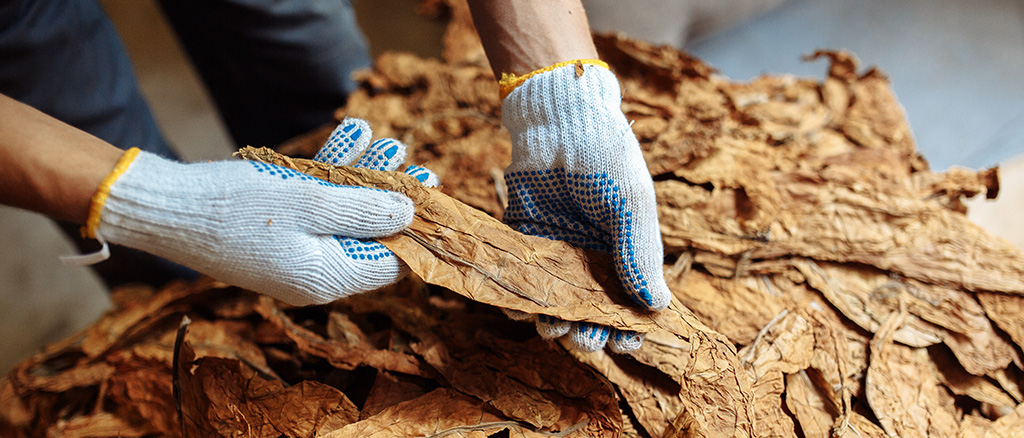Tobacco Processing

Check out our free Buyer’s Guide and learn how low or fluctuating humidity can negatively affect tobacco processing facilities.
Proper humidity control is crucial for maintaining the quality of tobacco products throughout the curing, storage, and processing stages. The process of controlling humidity helps maintain the quality of the tobacco, and also prevents issues such as mold growth, insect infestation, and deterioration. Maintaining material weight also has a direct impact on profitability.
Issues caused by low or fluctuating relative humidity
Relative humidity levels that are too low or too high can cause the following issues in tobacco processing applications:
- Uneven Curing: Inconsistent humidity control during the curing process can result in uneven drying of tobacco leaves. This can lead to variations in color, texture, and flavor, impacting the uniformity of the final tobacco product.
- Product Contamination: Fluctuations in humidity can increase the risk of contamination, especially in environments where tobacco is processed and packaged. Contaminants may compromise the safety and purity of the final tobacco products.
- Increased Production Costs: Inefficient humidity control systems may increase energy consumption and operational costs. Maintaining a consistent and optimal humidity level requires effective equipment and monitoring systems.
- Reduced Productivity: low humidity levels lead to static and dust/suspended particles, reducing machine performance, decreasing throughput, and increasing maintenance, leading to elevated quality problems and higher manufacturing costs.
- Deterioration of Tobacco Quality: Fluctuations in humidity levels may contribute to the deterioration of tobacco quality, affecting its flavor, aroma, and overall market value. Maintaining stable humidity is essential for preserving the desired characteristics of tobacco.
- Regulatory Compliance Issues: Variations in humidity levels may result in non-compliance with industry regulations and quality standards. Adherence to specific humidity requirements is essential for meeting product specifications and regulatory guidelines.
- Storage Challenges: Improper humidity levels in storage facilities can affect the long-term preservation of tobacco products. High humidity may lead to clumping and degradation, while low humidity can cause excessive dryness and loss of product quality.
- Mold Growth: Inadequate humidity control can result in conditions conducive to mold growth on tobacco leaves. Mold infestations not only compromise the quality of tobacco but can also lead to health concerns for consumers.
- Insect Infestation: High humidity levels create an environment favorable for insect infestation. Pests can damage tobacco leaves, leading to economic losses for growers and manufacturers.
Resources
Buyer’s Guide: Humidification for Tobacco Processing
Learn more about how issues caused by low or fluctuating humidity levels can negatively affect a tobacco processing facility..
Next Steps
Contact your local DriSteem representative to learn more about humidity control for electronic manufacturing facilities. Use the Find a Rep tool below to find your nearest representative.
Connect with a humidity control expert
Already using humidity control to protect tobacco processing facilities?
For best performance and highest efficiency, existing humidification systems should be checked to determine if any replacement parts are needed, if any other maintenance needs to be performed, and whether there is a software update available. Contact your local DriSteem representative to learn more.
